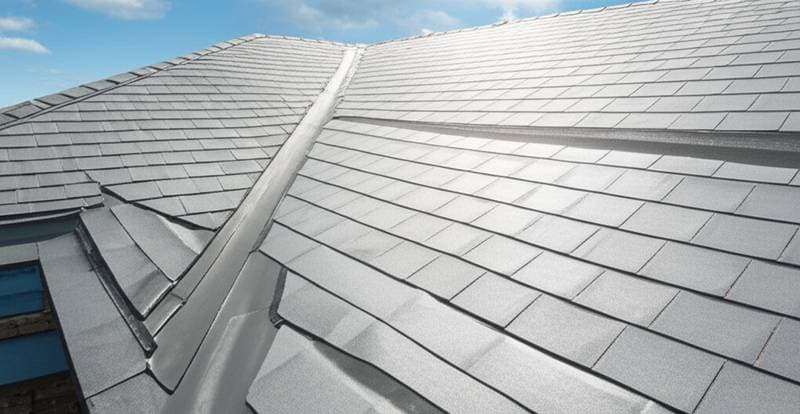Updated Energy Star Guidelines Enable Cool Roof Tax Incentives
Homeowners seek ways to decrease electricity expenses and maintain comfortable indoor environments without costly modifications. Roof replacements typically represent unavoidable expenditures, but recent Energy Star guidelines alter this view. Reflective cool roofs now qualify for substantial tax incentives that offset initial expenses and provide ongoing energy efficiencies. These changes facilitate informed decisions that conserve both finances and resources simultaneously.
Defining Cool Roof Characteristics
Cool roofs reflect a greater portion of sunlight and absorb minimal heat compared to traditional roofs. They achieve this through specialized reflective coatings, pale materials, or granules designed to deflect solar rays. Dark roofs exposed to sunlight often exceed 150 degrees Fahrenheit on their surfaces, whereas cool roofs under identical conditions remain near 100 degrees. This variance influences attic temperatures, air conditioning demands, and overall living conditions.
Energy Star establishes rigorous performance benchmarks for roofing products. Qualifying materials must demonstrate specified solar reflectance and thermal emittance levels, confirmed via third-party evaluations. These metrics ensure sustained effectiveness throughout the product's lifespan, beyond initial installation.
Understanding Tax Incentive Mechanisms
The enhanced Energy Star initiative allows qualifying cool roof materials to access federal tax credits. These credits generally apply to a portion of material expenses, excluding installation labor. The precise credit amount varies based on prevailing federal tax structures, yet numerous homeowners experience notable project cost decreases.
Consider a scenario where a homeowner equips a 2,000-square-foot roof with cool materials costing $8,000. A 10 percent credit yields $800 in tax reimbursement. When paired with diminished seasonal energy expenditures, the economic advantages become evident.
Quantifying Cooling Efficiencies
Cool roof savings vary according to regional weather patterns, home insulation quality, and local electricity tariffs. In areas like Philadelphia, elevated summer temperatures and humidity intensify air conditioning needs. Such roofs can decrease interior temperatures by two to three degrees Fahrenheit, potentially cutting cooling energy consumption by 10 to 15 percent.
For a residence consuming 9,000 kilowatt-hours annually, with 50 percent dedicated to cooling, and an average rate of 16 cents per kilowatt-hour, cooling expenses total $720 yearly. A 12 percent efficiency gain conserves approximately $86 annually. Incorporating the tax credit, the incremental expense over standard roofing recoups in five to seven years, with benefits persisting for decades thereafter.
Significance of Guidelines for Residential Owners
Energy Star revisions offer precise criteria for cool roof qualification, guaranteeing that only verified high-performers receive certification. This clarity builds consumer confidence in achieving tangible energy reductions. The certification framework also prompts manufacturers to advance reflectivity and longevity, broadening available selections.
Beyond individual gains, these standards mitigate urban heat islands and alleviate grid strain during peak periods. Cool roofs can reduce ambient air temperatures by multiple degrees, supporting community-wide energy management.
Selecting Appropriate Roofing Solutions
Cool roofing options span multiple types, including asphalt shingles, metal sheets, single-ply membranes, and clay tiles, each with reflective variants. Optimal selection hinges on roof slope, building architecture, and visual preferences.
Prioritize items bearing the Energy Star designation and confirm manufacturer-supplied documentation for tax purposes. Engage local contractors experienced in reflective systems to assess integration with attic airflow, insulation configurations, and current roof layouts.
Optimizing Installation and Longevity
Installation precision determines overall efficacy. Superior reflective materials falter if affected by improper seams, inadequate flashing, or heat-retaining sealants. Certified professionals ensure even application of light coatings and secure joints.
Ongoing upkeep preserves reflectivity. Conduct cleaning annually or biennially to eliminate dust, algae, or debris that diminish performance. Use low-pressure rinsing with water and neutral detergent. Schedule inspections to detect erosion or staining requiring intervention.
Broader Environmental and Comfort Advantages
Cool roofs extend benefits past utility reductions. They cool attic areas, easing stress on insulation layers and heating, ventilation, and air conditioning components. Reduced surface heat prolongs material durability, minimizing landfill contributions and renewal cycles. Integrated with photovoltaic systems, cool roofs enhance panel performance by moderating underlying temperatures, thereby optimizing electricity generation and comprehensive energy economies.
Evaluating for Sustained Returns
During bid evaluations, factor in projected energy savings and applicable tax credits. Initial premiums for cool roofs prove justifiable through rapid offsets via bill reductions and incentives. Extended warranties often align with or surpass those of non-reflective alternatives, enhancing reliability.
Consult a tax advisor prior to proceeding to verify eligibility. They outline necessary paperwork and affirm material compliance with Energy Star specifications. Retain detailed receipts and certifications to streamline claim submissions.
Sustaining Efficiency Through Maintenance
Annual roof assessments maintain optimal function. Remove accumulated debris, verify gutter functionality, and monitor for pigment loss or shadowed areas. Recoating faded sections restores original properties economically, avoiding full replacements. Complement with periodic insulation audits to uphold consistent thermal control and operational effectiveness.
Frequently Asked Questions
What constitutes an Energy Star certified cool roof?
A roofing system that satisfies designated solar reflectance and thermal emittance thresholds, validated through independent Energy Star testing protocols.
